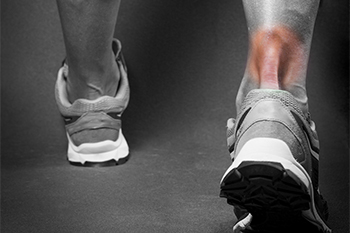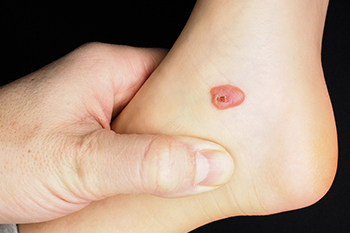
A burning feeling in the feet can be more than just uncomfortable. It may be a sign of an underlying issue. This sensation often starts in the soles or toes, and may come with tingling, numbness or sharp pain. One common cause is a type of nerve damage, known as peripheral neuropathy, which is often linked to diabetes. Other possible causes include vitamin deficiencies, alcohol use, poor circulation, or wearing tight shoes. The feeling may worsen at night or after long periods of standing. Treating the cause is key to finding relief. Depending on the reason, treatment may involve lifestyle changes, medication, or better foot support. If your feet often feel hot, numb or painful without clear cause, it is suggested you see a chiropodist for diagnosis and appropriate treatment.
Foot pain is a common problem treated by chiropodists. If you have foot pain, please consult with one of the chiropodists from The Footcare Centre. Our chiropodists can help you maintain the health of your lower limbs and your mobility.
When you are experiencing foot pain, it’s important to note the type of pain and its location, as this can help determine a diagnosis.
Pain in the top of the foot may be caused by:
Stress fractures
Sinus tarsi syndrome
Extensor tendonitis
Tibialis anterior tendonitis
Gout
Athlete’s foot
Ganglion cysts
Pain in the bottom of the foot may be caused by:
Plantar fasciitis
Foot cramps
Tarsal tunnel syndrome
Plantar fibromatosis
Posterior tibial tendonitis
Stress fractures
Flat feet
Pain on the side of the foot may be caused by:
Ankle sprain
Cuboid syndrome
Peroneal tendonitis
Stress fractures
Bunions
Corns or calluses
Posterior tibial tendonitis
Heel pain may be caused by:
Plantar fasciitis
Achilles tendonitis
Bone spurs
Heel fractures
Retrocalcaneal bursitis
Sever’s disease
Pain in the toes may be caused by:
Gout
Hammertoe
Turf toe
Bunions
Ingrown toenails
Blisters
Arthritis
These and many more conditions can be treated by a chiropodist. If you have any questions, please feel free to contact our office located in . We offer the newest diagnostic and treatment technologies for all your foot care needs.





